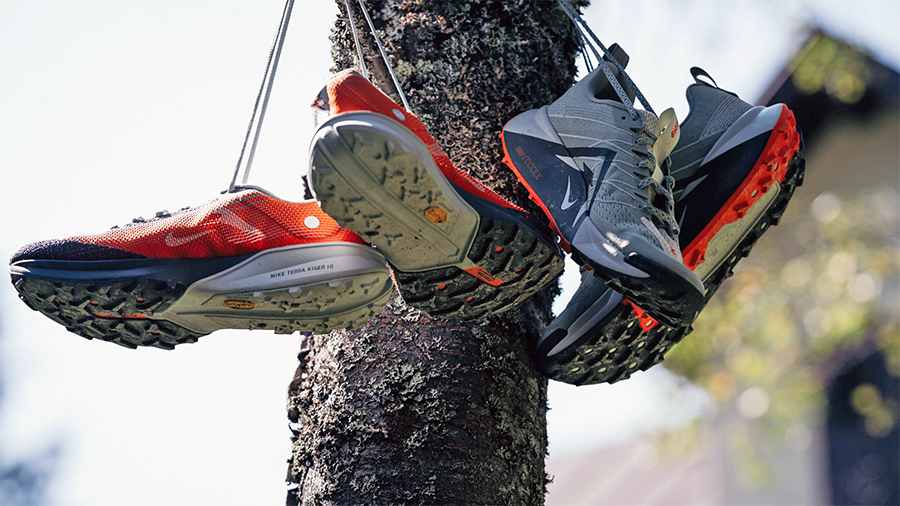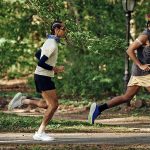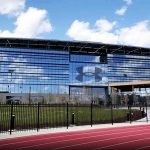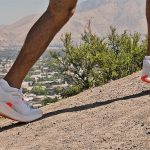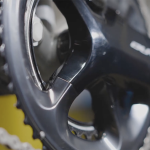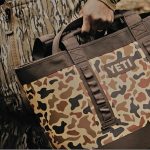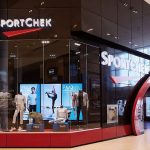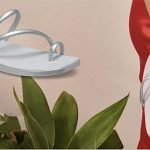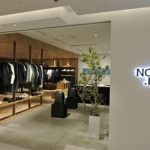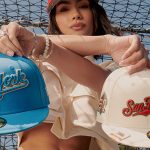On Nike’s first-quarter analyst call, Matt Friend, EVP and CFO, said Nike is finding success with some new products, particularly in running, and the hiring of Nike veteran Elliott Hill as CEO was enthusiastically received by Nike’s employees. However, he warned that business conditions worsened in the quarter with online traffic, retail sales across the marketplace and spring orders all coming in lighter than planned.
Friend further cautioned that investors will have to be patient as Hill, who had previously worked for Nike for 32 years, potentially realigns brand strategies to resume growth.
“We are moving aggressively to shift our product portfolio, create better balance in our business, and reenergize brand momentum through sport,” added Friend. “That said, a comeback at this scale takes time. And while there are some early wins, we have yet to turn the corner.”
Given the CEO transition and with three quarters left in the fiscal year, Nike announced it will be withdrawing its full-year guidance. Friend said, “This provides Elliott with the flexibility to reconnect with our employees and teams, evaluate the current strategies and business trends, and develop our plans to best position the business for fiscal ’26 and beyond.”
Nike also postponed its Investor Day, which had been scheduled for November 19. Nike will still provide quarterly guidance and forecast bleak results for the current quarter.
For the fiscal second quarter ended November 31, sales are expected to decline in the 8 percent to 10 percent range following a decline of 10.4 percent in the first quarter.
Second-quarter gross margins are projected to be down approximately 150 basis points, with higher promotions, channel mix headwinds, and supply chain deleverage more than offsetting lower product costs and a decreasing benefit from strategic pricing actions. SG&A is expected to be roughly flat versus the prior year, with increased marketing investments largely offset by tighter operating overhead due to primarily driven by wage-related savings.
In February, Nike announced plans to reduce about 2 percent of its workforce as the sportswear the sportswear behemoth looks to cut as much as $2 billion in costs.
Shares of Nike were trading down about 6 percent in pre-market trading on the cautious guidance.
Elliott Hill Receives Warm Welcome from Nike Staffers
On the positive side, Friend noted on the call that Hill has “significant expertise in delivering growth by bringing product and storytelling with impact into an integrated marketplace” and touted his potential to inspire Nike’s teams.
Before retiring in 2020, Hill was president of consumer and marketplace, leading all commercial and marketing operations for Nike and Jordan Brand, including the P&L across the company’s four geographies.
“Our employees’ response to this announcement has been tremendous,” said Friend. “You can feel the energy and the enthusiasm walking around campus. And we’ve heard nothing but excitement from our teammates around the world, including our alumni network as well as our partners. We all look forward to working with Elliott as he leads Nike’s next chapter.”
He thanked John Donahoe, CEO since early 2000, for his contributions, including leading Nike through the pandemic, accelerating the brand’s digital transformation, and investing in communities globally. He said, “We thank him for all he has done to move Nike forward.”
Friend will officially succeed Donahoe, who is retiring, on October 14.
Hill arrives as Nike has been losing market share as many market observers believe Donahoe leaned too heavily on classic footwear franchises over foremost emphasizing innovation and pushed direct-to-consumer (DTC) at the expense of wholesale partners who help establish newer models in the market.
In the Q&A session, Friend called out Elliot for undertaking a “similar approach” to what Nike is doing currently to revive growth in North America in 2010. At the time, the North America region refocused on sport not only to sell more performance products but “deepen connections” with consumers to drive purchases of lifestyle product.
“One of the things that we did in North America back in 2010 when our business was stagnating from a growth perspective, and Elliott was a new general manager at that time, was we reprofiled the marketplace around sport to ignite growth in the marketplace,” said Friend. “And the net result of that was double-digit growth over the next four years and really set the foundation for Nike to grow throughout the decades of 2010. And so, that is where our focus and our attention has been.”
Also encouragingly, Friend noted that Nike is finding some “early wins” in its move to deemphasize classic footwear models in favor of newness, particularly in the running category. He predicted newer footwear models overall will deliver mid-to high-single digit growth in units this coming spring based on order trends.
However, Friend also said the gains in newer styles are “not yet large enough to offset the declines elsewhere in our portfolio,” cautioning that sales declines are expected for Nike for several more quarters.
Nike’s Unit Sales Miss Plan in First Quarter
In the first quarter ended August 31, sales declined 9 percent on a currency-neutral basis (10.4 percent reported) to $11.6 million, in line with consensus estimates of $11.65 billion. Nike Direct was down 12 percent with Nike stores up 1 percent and Nike Digital down 20 percent. Wholesale was down 7 percent.
Friend said that while Q1 revenues were largely in line with projections set at the time of its fourth-quarter release in late June with the benefit of higher ASP (average selling prices), unit sales came in lower than expected.
The underperformance in unit sales reflected “more significant” declines than expected in Nike Direct with “particular softness in traffic on Nike Digital as well as in our partner stores in Greater China.” Nike’s online sales have been declining in recent quarters as consumers have returned to in-store shopping coming out of the pandemic.
Friend also said physical retail underperformed plan for Nike, including at its wholesale partners, in an overall challenging marketplace although back-to-school selling for the Nike Brand also underperformed competitors. Promotional activity increased in the period to offset slight elevated marketplace inventories, he added. While store traffic improved in August with growth seen in factory stores in Q1, the overall period fell short of expectations.
Friend also said Nike’s moves, as previously announced, to reduce inventories of its three classic footwear franchises – Air Force 1, Air Jordan 1, and Dunk – drove a mid-single-digit headwind on Q1 revenue in the quarter. Friend said Nike became “too concentrated” against its classic styes over the last couple years and continues to seek a “better balance in our business” to stoke demand.
Sales of Nike’s three key franchises declined more than the total business in the first quarter. Friends said the most aggressive actions to clear the franchise product was at Nike Direct, particularly digital. As a result, the key franchises were down nearly 50 percent versus the prior year on Nike Digital while “much better sales trends” were seen in wholesale where allocations weren’t as affected.
Friend said, “We are actively rebalancing product allocations to our highest traffic channel in order to maximize franchise health and full-price realization.”
Due to its efforts to reduce inventory levels of the key franchises, Nike’s men’s and women’s lifestyle business was planned down double digits in Q1 and declines are expected at a similar rate through the year. The Jordan brand was planned down double digits in the first quarter and is likewise expected to see similar declines through FY25. Nike digital is expected to be down double digits in FY25.
Finally, Nike’s spring 25 order books were about flat and lighter than planned. Friend attributed the order shortfall to the challenging competition. The CFO stated, “The multi-brand environment is very competitive today and it will take time to expand market share.”
The shift in recent years to emphasize DTC at the expense of wholesale enabled long-time competitors such as New Balance and Adidas as well as upstarts, especially Haka and On, to claim shelf space abandoned by Nike.
Earnings in the quarter fell 27.5 percent to $1.05 million, or 70 cents a share, but came ahead of analysts’ consensus estimate of 52 cents due to better-than-expected expense leverage.
Gross margins improved 120 basis points to 45.4 percent primarily due to lower product costs, lower warehousing and logistics costs, and benefits from strategic pricing actions in the prior year.
SG&A declined 2 percent on a reported basis with accelerated investment in marketing aligned to the Paris Olympics and other events more than offset by a reduction in overhead expenses, primarily driven by wage-related savings.
Regional Performance for Nike Brand
Across regions, North America revenues for Nike Brand declined 11 percent on a currency-neutral basis (11.0 percent reported) to $4.83 billion. Nike Direct declined 11 percent with Nike Digital down 15 percent and Nike stores down 1 percent. Wholesale declined 11 percent, reflecting unfavorable shipping timing.
EBIT (earnings before interest and taxes) in the North America region fell 15.2 percent to $1.43 million with gross margin expansion offset by marketing investments.
Calling out some key activations in the region, Friend said, “This quarter’s highlights included brand activations around a full Summer of Hoops. We engaged players and fans with our New York versus New York Series, our WNBA All-Star celebration, Jordan Grassroots Basketball in Chicago and L.A., and our League Invitational.”
EMEA revenues for Nike Brand were down 13 percent on a currency-neutral basis (15.2 percent reported) to $3.1 billion. Nike Direct declined 12 percent with Nike Digital down 24 percent and Nike stores up 3 percent. Wholesale declined 11 percent. EBIT slumped 14.8 percent to $792 million.
Friend remarked on activations in the EMEA region, “This summer in Paris, both Nike and Jordan were unmissable, with our Olympics campaign just about everywhere you could look on billboards, big screens, on the side of buildings, and most importantly, across all of our retail touch points. In addition, Jordan introduced its new campaign with a six-week District 23 takeover in the city, a global one-on-one basketball tournament, and the brand’s first-ever Twitch live stream, which drove over 10 million views, the biggest ever activation for any brand on the platform.”
APLA revenues for Nike Brand slipped 2 percent on a currency-neutral basis (7 percent reported) to $1.46 billion. Nike Direct slid 4 percent with Nike Digital down 15 percent and Nike stores up 9 percent. Wholesale dipped 1 percent. EBIT declined 2.9 percent to $402 million.
Highlights included the opening of a Nike and Jordan World of Flight door in Mexico City, its largest retail space in Latin America and first dual-brand shopping experience. Friend said, “Q1 traffic and sales for this concept far exceeded our plan, with consumers seeking out exclusive products, member-only experiences, and our latest women’s and Jordan assortments.”
Greater China’s revenues for Nike Brand declined 3 percent on a currency-neutral basis (4.0 percent reported) to $1.67 billion. Nike Direct declined 16 percent with Nike Digital down 34 percent and Nike stores down 4 percent. Wholesale grew 10 percent. EBIT was down 4.4 percent to $502 million.
Friend said on China, “This summer, retail sales moderated across the industry, and Nike was not immune as traffic decelerated in our channels with lower sell-through rates. This has resulted in elevated inventory in the marketplace in an already promotional environment.”
Friend said Nike continues to be the leading sports brand in China and significant investments are being made in marketing, including a campaign celebrating Zheng Qinwen, who took home gold as China’s first Olympic tennis champion. The Jordan Brand’s athlete tour returned to China for the first time since the pandemic with activations in Shanghai and Beijing. Peg 41, Alphafly, Sabrina 2 and the new Kobe were strong sellers in the region during the quarter.
Early Wins
Friend spent some time on the call highlighting “some of the early wins that we are seeing, especially as our teams get back on the offense in sport with consumers.” Growth was seen for Nike Brand found in men’s fitness, men’s global football, and men’s and women’s running footwear. Two of its largest performance franchises, Mercurial in global football and the G.T. series in basketball, delivered double-digit growth across all channels.
In running, which Friend described as “one of our toughest fights over the past few years” and “one of our biggest opportunities,” men’s and women’s running footwear delivered positive growth in Q1, marking “meaningful improvement” versus the prior quarter.
Spring 2025 footwear units in running overall is set to grow double digits versus the prior year. In North America, Nike is up double digits this quarter with running specialty partners and seeing encouraging holiday and spring order books.
Friend said Nike’s running team is increasing its focus on connecting directly with runners. He said, “While we’ve seen tremendous success at the top of the pyramid with innovation with marathons and on the track, we haven’t made as much progress with everyday runners. And that’s where our team’s focus and attention has been over the last year.”
Nike launched one of its biggest running campaigns in years that will run through the holiday selling season to support the traction seen in running. Other highlights in running include the Pegasus 41 launch delivering mid-teens growth above last year’s Pegasus model.
Upcoming innovations in run include a new maximum cushioning system combining “high-stack ZoomX and Zoom Air for a new sensation that had test runners raving;” a refreshed lineup of performance running apparel, including new women’s-led designs; updates to Nike Trail models for better traction and durability; and new franchises below $100 that scale innovation to more accessible price points.
Overall, new footwear products revenues were up strong double digits in the first quarter versus the prior year with other standouts including the Sabrina, Kobe and Alphafly.
Sequential gains in the percentage of newness and innovation as a mix of total footwear business are expected in coming quarters as inventories of its three key franchises are reduced. At the same time, Friend said Nike will stay disciplined on costs. He said, “For our teams, this means tightly managing operating overhead and reallocating resources to maximize consumer impact and growth.”
Other “wins” in the first quarter included the Olympics, where Nike had “one of our biggest brand investments in years” and the most athletes among brands winning medals. Friend added, “Most importantly, this summer was just the start, with the investment lined up behind a steady cadence of bigger, bolder brand storytelling to come.”
Nike also continued to invest in effort to “elevate and differentiate our brand at retail,” citing an elevated women’s fitness concept that launched at Dick’s Sporting Goods and a new HomeCourt concept at Foot Locker.
Friend said Nike’s willingness to invest in new concepts is one way Nike is repairing relationships with partners to improve Nike’s breadth of distribution across product range at wholesale. Friend said, “Our teams have been closely engaging with our partners since we acknowledged some of the missteps related to over-centering on direct. And I think the momentum that we’re building with our partners is very encouraging.”
In June, Nike surprised Wall Street by predicting sales to fall by mid-single digits in its fiscal year that ends May 31, 2025, including a high-single-digit drop in the first half. Previously, Nike had predicted sales would grow for the full year.
While withdrawing guidance, Friend said that while revenue expectations have moderated since the start of the year “given traffic trends on Nike Digital, retail sales trends across the marketplace, and final order books for spring,” Nike continues to see indications of slight second-half improvement in revenue trends versus first half as Nike seeks to scale innovation across the marketplace to offset the impact of moves to reduce inventory levels in key franchises.
Gross margins are now expected to decline versus the prior year due to incremental headwinds from markdowns required to reduce slightly elevated inventories.
Friend concluded, “All told, we expect that the return to strong growth will take time, but we believe that we have all the right building blocks, especially with Elliott now leading us forward.”
Image courtesy Nike

